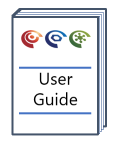Editing palette entries
Overview
Defining the palette entries to be shown is an important aspect of configuring palettes and keeping them up to date with respect to the data values in your project.
Version: 1.28+ (Feb 2021)
Usage: Palette -> Edit palette assignments
How to use in practice
The palette assignment editor is flexible and allows the user to create and maintain palettes across the system, working with colour, shape and size palettes.
Editing Discrete Range Palettes
When selecting to Edit palette assignments for discrete valued properties, the user is presented with the above UI. This shows the currently selected entries on the right-hand list. The order shown is the order in which they are currently shown on the palette. The count of the number of entries is shown in the list header, and for each list item the number of samples with that value is shown in the list.
The left-hand list shows similar information, but for values not currently included in the palette (probably because when the palette was created this data was not included in the project, or the user has previously removed these entries from the palette). Entries can be dragged and dropped to and from each of these lists (or the arrow buttons can be used). The order of the properties in the right-hand list will affect the order of the entries in the palette.
Sorting list entries
The palette entries can be sorted based on either the Selected value (sorted alphabetically) or Sample count (sorted numerically). This is done by clicking on the column headers - this will toggle sort ascending / descending. Once sorted this will determine the order in the palette legend. This can only be undone once the changes have been applied to the palette using the OK button. From v2.5 sorting in palettes uses a natural sort order that works for well names and text properties.
Filtering the values shown
Sometimes you only want to focus on a subset of the data within your project. In this case typically you will define sample sets (or potentially focus on individual wells) and use these sample sets to show the sample counts based on values in the sample set. This can help to create a palette focussed on values relevant to that subset.
Adding new values
You may know that in the future you would like the palette to include values not currently in the data. You can add your own entries, typing the string into the Custom value box, and selecting to Add this. Note that the string you type should be the string that would be the data value. On the main palette dialogue you can control how this is labelled on the legend.
Editing Continuous Range Palettes
When editing continuous valued palettes, using the Edit bins... option, the above dialogue is shown. This allows you to create irregular bins, by editing the bin edges manually, or splitting or merging existing bins. You can edit the bins to produce exactly the palette you want here. Note the property and units are shown at the top of the dialogue.
Setting regular bins
If you want to change the default regular bins to your own set of regular bins, or revert irregular bins to a regular set, you can use the lower 'Set regular bins' section of the dialogue. This will dynamically update (and over-ride) the currently defined bin edges, so use this before you start to manually adjust the bin edges if irregular bin edges are desired.
Editing Date-Time Range Palettes
If you are working with date-time palettes, selecting the Edit bins... you will display the following dialogue:
This dialogue allows you to adjust the date-time ranges using the regular bin editor. Here you can define whether you want your date-time intervals to be years, months, days, hours, minutes or seconds. As date-times are not nicely decimal we try and find appropriate intervals in an automatic manner, but they can be adjusted as desired.
Once date-time palettes are created colours can be assigned as continuous palettes.
© 2025 Integrated Geochemical Interpretation Ltd. All rights reserved.
